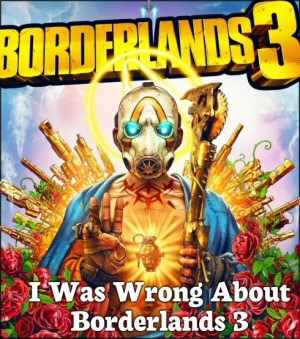 |
When I do wilderness travel, I sort of make it a branching maze. For example: “You are in a broad clearing. From here you can go east into the valley or you can ascend the large hill to the southwest. You could also turn around and return to the pine grove to the north, which you just left.” The players understand that I’m presenting them with choices that are likely, given the terrain. Sure, they could choose some unlikely course of action, like going halfway up a hill and then walking around, but this will be slower, pointless, and they will just end up at a recycled version of one of my established locations anyway. This gives them a bit of freedom, and makes wilderness seem less arbitrary. Some ways are faster, some can be very slow (like a valley which gets thick with vegitation once they enter) and some can have encounters.
I really like this system. It lets players move around more or less freely, but still has enough structure so that the DM can keep track of where you’re going, where you’ve been, and how long it took to get there. For difficult topography like swamps and dense jungle I make the waypoints very close together, so that many movements are needed to cover a small area. If they are traveling over wide open grasslands, I’ll make the dots very far apart. I usually space them based on time, so that traveling from one waypoint to the next takes a couple of in-game hours. When the players have gone through a few of them and I tell them the sun is setting, they will actually have a sense that in-game time has passed.
This offers a nice theoretical “wall” around your gameworld. When the players say they want to go west and leave the game area, you give them a few waypoints of increasingly difficult swamp / desert / cliffs / mountains / jungle. If they are actually roleplaying, they will have to ask themselves, “would our characters really be wading through this crap for no good reason?” If they keep going and enter the blank, empty areas of the map, they shouldn’t be surprised at the lack of towns and other interesting locations. Who would build a city in a swamp?
I Was Wrong About Borderlands 3

I really thought one thing, but then something else. There's a bunch more to it, but you'll have to read the article.
Trekrospective

A look back at Star Trek, from the Original Series to the Abrams Reboot.
The Best of 2017

My picks for what was important, awesome, or worth talking about in 2017.
Playstation 3

What was the problem with the Playstation 3 hardware and why did Sony build it that way?
Trashing the Heap

What does it mean when a program crashes, and why does it happen?
 T w e n t y S i d e d
T w e n t y S i d e d
You’re just crying out for a Monty Python reference, aren’t you? “When I first came here, this was all swamp…”
“One day, all of this will be yours.”
Interesting just when I thought I know all about mapping encounters to wilderness maps. I wonder what method you use to key the circles. How far apart you make the circles in hours?
Rob Conley
I prefer the Might and Magic computer game concept, even the original on Sega had it right. You could go anywhere in the world anytime, but some areas were just too tough. Head right into that swamp if you want, but when your 3rd level party bumps into that ancient green dragon, don’t get mad. There’s a reason there are no towns, bandit camps, or any other humanoid life in this “wall” swamp, the dragon doesn’t let them in.
I just have to ask; what program did you use to make that map?
This really is a very fine plan and next time I GM anything I’ll be using it. Thanks a bundle Shamus.
Robert Conley: I make the circles about two hours apart, so players can cover about five or six a day.
WysiWyg: I made it in Paint Shop Pro (Poor man’s photoshop)
I have to say (as a player or a DM), there’s nothing I find more boring than lots of needless travel, especially through wilderness. Unless there’s some actual conflict involved in the travelling itself (which is pretty rare) all you need is a couple sentences of flavor text to get the players where they’re going and move on to what’s important — important NOT being random encounters, which are the bane to interesting storylines everywhere.
For example, I saw someone come up with the great example of breaking down the Fellowship’s journey through Moria into what’s really important:
1. You’ve got the business at the gate with the tentacled monstrosity
2. You’ve got a long journey into darkness where nothing much happens but the atmosphere is conveyed.
3. You have the discovery of Balin’s tomb with some time for dialogue
4. You have the fight at the tomb with a cave troll!
5. There’s the flight into darkness.
6. Crossing the bridge.
There’s no need to offer all these choices of directions, unless you want the party to get lost. And in this case, being lost isn’t very interesting. You WANT the party to find Balin’s tomb and all that follows.
You may say, “But as a player I WANT those choices.” Not me, I really don’t want to spend a bunch of time (real time) navigating something. Fast forward a bit, tell me how long it took, and move on what’s really important.
Thinking DM of the Rings, here – you’re guided through by an NPC. If that’s not appropriate, have an NPC give the PCs directions or a map or something.
Gah, sorry for double post. But, I know a lot of people aren’t going to agree with me there. It’s sort-of an indie POV, which makes sense since I’m starting to get into more indie RPG’s.
Personally, I would set up gatekeepers all across the land. Gatekeepers with big blue hats, yelling “You shall not pass!” at all those who attempt to cross him.
The one time I did this, albeit in fiction rather than in an RPG, the gate keeper was only defeated when a wave of magic cake erased the gate from reality, forcing him to mumble “you shall not pass …” under his breath and wander off dejected.
Jeremiah, As a long time DM/GM, this type of thing really is Game-group specific. When I was a 12 year old DM with 10-12 year old players, we made games only using the Greyhawk map and the DM Guide’s table of random Wilderness encounters. Move one hex a day, roll for day and Night encounter. We had fun!
Now, 20 years or so years later I’m more of your school of thought. Our group is much more action and Investigation oriented, while we still play a variation of D&D. Travel is short unless an ambush is planned or a key story/plot point is planned on the road ahead. Yes our style is pretty ‘railroading’ since I write episodic type adventures, but the players play along (quipping some of the time granted). However, true player input to the game comes with NPC interaction and player feedback on where they’de like to go next between game sessions.
Cheers
I find a nice way of handling exploration is the inevitability system. It works better in dungeons, but can easily be applied to open scapes. The fundamental idea is that, regardless of where they go, they will end up where you want them.
An example. An underground cave system, infested with Kuo-Toa and a shrine in the centre, and passages leading to the underdark below. The players decide to bypass the Kuo-Toa, and so they have their Drow character bind the others as slaves, and take them through to the underdark. Clever and inventive, I didn’t penalise the players by producing a modern Kuo-Toa Custom’s Office, and make them get a Business Visa for their stay. However, they have a date with a dragon. From the Kuo-Toa shrine, if they take any path other than the path they came from, it will lead to the Dragon. The Dragon’s lair is at the end of every path, until they find said lair, at which point every path reverts to some other goal. Some are dead ends, some to the underdark, but the Dragon had to be found.
In the open, if you have an unmapped wilderness and want them to go back to civilization, you can simply say that after wandering for X hours in any direction, they will face an encounter that is too strong, or find an NPC telling them to go back. The encounter or NPC is everywhere and nowhere until I deem it to appear. With some ad-hoc DMing, its not hard to make this style completely seemless. It is different to the “There is a swamp, with a monster in it” idea, because the monster’s lair must be found by players. In this system, survival skills will give them an advantage and allow an ambush, rather than finding the beast. It becomes “There is a swamp, and a monster inhabits it”. The monster is everywhere, its lair is every body of water or every thick scrub. This eliminates much of the pointless navigation on the players’ behalf simply because they will inevitably reach the encounter, no matter where they go, or what they do, and if they play along (not necessarily being aware to my plan) then the story progresses at a very nice rate. My campaigns normally have a flavour/recap paragraph or two, then any new missions/leads if they’re working for an NPC or staying at an Inn, then they will face a mini-dungeon (which can be standalone or part of a larger whole) where they will face three encouters – usually a multi-enemy fight, an ambush/trap/scripted scene, and a boss. These are very vague categories. Between each is the limited navigation and flavour, to keep the story alive between combats/negotiations. It is very much like episodes but at the end of the night it feels complete, and the next week has a level of expectation and anxiety that is difficult to regularly produce in an open-ended sandbox campaign, like a LotR one.
I’m with Jeremiah here, only more so. The idea of asking the players “which way do you go now” is utterly alien to me. It’s not even that I don’t care about the answer, it’s that I actually don’t understand the question. It’s like being asked “would you rather speak entirely in rhyme, or have arms that waved uncontrollably when you walked”.
If I am presented with a decision to go left or right, but no clear indication about what the consequences of those decision will be, then that is no choice at all, because I have no meaningful way to make a decision.
If I’m wandering through Moria, then like Jeremiah I want the journey to go Gate: Tomb: Balrog. There’s nothing else interesting, and I’d rather go straight there than make arbitrary decisions about which way to turn in a maze of twisty passages, all alike.
And I don’t think it’s an indie game thing: I hate indie games with a passion (except Burning Wheel, which is actually a totally conventional game with indie marketing).
I typically plot my adventures by creating the back story and then bringing the characters in at some point in the middle. I try to determine what the independent actions of any opposing forces will be, regardless of the player’s activities, and what their goals and motivations might be.
This lets me react in an intelligent manner when the players step off the path, which they inevitably do. It also gives me some options towards nudging them back on the path without specifically railroading them.
As others have mentioned, dead ends very quickly become obvious. I’ve used hints, clues, NPC’s and natural disasters to let my players know that they’re on the wrong track. They usually get the message.
I am so stealing this idea. Thanks Shamus!
Similar to this, or at least your choice of words made me think of it, is how you travel through the Wyld in Exalted.
In Exalted, the Wyld is a chaotic region, ranging from the purely unformed Deep Chaos up to the not-quite-reality Bordermarches. Travel in the Wyld is all about what you want and what sort of story you’re in (the natives run around trying to find interesting stories to be part of, and humans who aren’t careful can find themselves locked into a particular story as, for example, The Hidebound Village Elder).
Distance in the Wyld is measured in waypoints (there’s the similarity in terminology): any time something interesting happens, that’s a waypoint. Anything that’s not in a waypoint is just travel and is always waved over. If you’re sailing a ship through the Wyld seas and your crew mutinies en route, that becomes a waypoint–and counts as one of the waypoints you need to traverse to get to where you’re going. It’s noted as a feature that finding interesting things to do on the way makes the trip literally go faster.
Apart from such self-generated waypoints, waypoints will typically have to do with the reason for travel/type of story. If you’re travelling through the Wyld as part of a rebellion, a mutiny waypoint might even be inevitable. On the other hand, if you’re looking for your estranged lover, you may run into a faerie seductress, get caught in a Romeo/Juliet feud, or get treed by a monster whose very agitated because it’s mating season.
Shamus, Did the players get to see the map with the circles and lines on it, or was that your DM map, and you just showed them on their map where they walked to.
What about random encounter tables?
Players wander through a forested area which is totally non-descript on the map. If they get bored, roll d100 and consult this table:
1-2: Bandit ambush, d6 bandits of same level.
3-4: Bandit ambush, d20 bandits of 2 levels lower.
5-7: Wandering merchant of potions (all very low-power).
8-9: Wandering merchant of blades & daggers, 2% chance of magical.
10-11: Maiden bathing in a small stream, who turns out to be a lure for a bandit ambush, d20 bandits of same level.
12-13: Maiden bathing in a small stream, who turns out to be a dryad and curses the first character to see her in human form.
Etc.
Change up the table as the terrain changes.
Phlux: They saw the map without the lines and circles, and I described to them roughly where they were. So, they knew they were “halfway through” or whatever, but they couldn’t pinpoint themselves with a meta-game GPS.
100: Maiden bathing in a small stream, all party members are now infected with a disease?
It is completely dark. You may be eaten by a grue.
George Washington and Pierre L’Enfant?
In a game a friend of mine was running, one nature oriented character (I think he was a ranger) decided his character wouldn’t want to go into a city. So he set up camp along the treeline outside of town and put his feet up. The rest of the party went into town and had the adventure the DM had written for them, which lasted the entire evening. (He made adjustments for the party’s lack of a ranger.) At the end the player, who had been sitting bored at the table for the entire night, announced that he had achieved a moral victory by holding to his character’s values.
Of course, Shamus’ tactics are not for people like this. His example is for good players who don’t want to see the rails. Players like the one above really should be asked to either play ball or go home.
Jimmie Says:
Who would build a city in a swamp?
George Washington and Pierre L'Enfant?
And look how well THAT worked out…
You are standing at the end of a road before a small brick building. Around you is a forest. A small stream flows out of the building and down a gully.
“What about random encounter tables?”
Random encounter tables are the devil! But, seriously, there should be nothing random about encounters. There’s no need to be ambushed by bandits unless that’s somehow interesting to the story, otherwise it’s just a little loot and xp for the players, or just another meaningless way to die. The only way that might be meaningful and still be seen in any kind of “random” sense is maybe if the PC’s get lost, then a consequence of getting lost is being waylaid by bandits, or whatever. Otherwise, move on and get to the juicy bits of the story.
Shamus, I borrowed your idea months ago for a campaign I was running. Unfortunately the campaign lasted a few sessions and then fizzled apart. Your idea was fine, it was my first-time DMing that needed work. And also that my only player was literally a child.
Incidentally, I also used PSP.
Shamus, I really like your predetermined waypoint idea for travel. I agree that players should be able to maintain the at least the illusion of freedom for their characters and that it is one of the DM’s jobs to skillfully hide the tracks.
For my campaign I also use wilderness navigation rules. If characters stray too far off the beaten path without a guide or a map, the have a pretty good chance of getting lost. Naturally, in the process of bumbling about in the woods, they often find themselves ending up in the general direction the DM originally intended ;) On the other hand, if they don’t get lost, they are usually rewarded with finding nothing but a whole lot of pretty landscapes. Eventually they get bored and head back to town where they can be redirected to the plot.
I personally dislike random encounters myself. However, my campaign uses a character point system for experience that is not specifically tied into combat encounters. A benefit of removing character advancement from combat kills is that I don’t have to worry about level appropriate encounters or giving a certain amont of combat per session. The PCs have to use good judgement and not just run headlong into battle. Also, if frees up the PCs to enjoy noncombat plotlines without worrying that they are missing out on gaining another level. Depends on group preferences though I suppose.
But, seriously, there should be nothing random about encounters
In general, I agree, however “random” (or semi-random or quasi-random) encounters do create a sense of the passage of time. If the players just bounce about from plot-event to plot-event if starts to feel like they live in a vacuum.
It's a very nice idea, and I'll keep it in mind for when I finally find enough players to set up a campaign. But doesn't it mean you still have to plan for every bit of the territories in the map, albeit in a discretized way?
Another thing I could try for those insisting in traveling in the blank areas of the map is the good old Random Encounter table, or rather, a set of ones tweaked for the regions they're exploring. I'm hoping that would give off enough “wilderness” feeling… After all, what is it you get in wild, unexplored regions? Animals, xenophobic tribesmen, possibly brigands, and deserts, treacherous swamps and impassable mountains. As someone said before me, there's a reason why the places are empty, right?
You stand in the broad clearing where you spent the night. To the NORTH is a hilltop which promises an excellent view of the surrounding area. To the EAST is a densely-forested road that does not look like it has been traveled in some time. To the WEST is the road leading to the town you left.
Obvious exits are NORTH, EAST, WEST.
Command?
>
I was just thinking the same thing… Very MUDish (or Zorkish).
“You are in a maze of twisty little passages, all alike…”
> Kill troll with sword
Shamus, that’s a great idea. I was never very good at handling distance and time when dealing with wilderness travel and I like your system a lot. I will definitely have to utilize it next time I DM.
–Ronald Says:
May 15th, 2007 at 7:18 am
“One day, all of this will be yours.”–
“What, the curtains?”
Random encounters do not have to be random. That is something that many people have difficulty grasping.
For example, when traveling through an area, as GM I normally have pre-generated a list of encounters, geared towards the area. If a “random” encounter occurs, I take the first one off the list. If the list gets exhausted, then the area is “empty” – bandits are dead, wildlife has become sufficiently warned of your presence to avoid the party, and so on.
Most players will expect a certain amount of incidental events. If you travel for two weeks on the road between two major cities, and never meet anybody coming the other way, it would be very strange. Encounters with friendly (or at least non-hostile) creatures can also be used as a way of giving the players some information that they missed in the last area, or as a hook into a side-quest. (“Turn back travelers! A demon is terrorizing the town!” calls the merchant from a wagon that passes you at the fastest speed the poor, exhausted horse can manage.)
I saw a friend of mine (and GM) reading this, and I had to go look it up for myself. It’s brilliant!
One of the things that bothers me about how most games are ran is the “magic carpet” that all parties seem to have. You travel from point A to point B, with no real sense of there being *travel* actually happening. Yes, travelling can be tedious and boring if not prepared, but sometimes it’s the journey that counts.
Someone earlier mentioned the Moira bit from LOTR. What they skipped over was that prior to Moira, Frodo made the decision to go there in the first place.
A fine idea; I have to give you credit for inspiring a “chase” mechanic which had great results in the current campaign I’m DM-ing. It was essential to creating a thrilling, yet _non-combat_ experience (first time I’ve ever done that, so I was very pleased).
It seems like the way you’ve used the system, it accounts for days’ or weeks’ worth of travel. I liked the idea, and decided to try tweaking it to cover just a few minutes, in-game, between what I called “junctions” (where the branches come together).
The players were fleeing through a magic-blasted swamp from unknown pursuers, in the middle of the night. At each junction, I gave them the description of the spot and of the exits from it (noting at the start that going back the way they had come was always an option, though likely to close the distance between them and their pursuers), then started a timer. At each junction, they had 1:30 to do the following:
–Ranger leading the party has to make a DC 12 Survival check to discern the trail ahead (I’ve told them what the exits are, but the idea is they still have to spend some effort to find them). May discuss a choice of direction with the group, but must give a chosen exit by the 1:30 mark.
–Everyone else makes two checks to continue fleeing, with a DC 12: Constitution (endurance check to keep running) and Dexterity (to keep their footing amidst darkness, underbrush, quicksand, etc.) The ranger’s ability to keep his feet and keep moving were presumed to be included in his survival check.
I set up a series of penalties in case of failure, measured in “Delay Points” (DP) — if the party amassed too many DPs, the pursuers would start causing trouble, and an ultimate DP ceiling promised capture. If the ranger didn’t make his Survival check, DP. If the party decided to try and force their way through a thicket or jumble of fallen trees, DP. If someone failed either of the other checks, DP. I included a way for party members to help each other — if you passed your Con & Dex checks for the round, you could give someone who had failed theirs a chance to reroll (to simulate bearing someone up while they’re out of breath, or helping up a fallen character). It wouldn’t wipe out the DP incurred by their first failure, but let them avoid having to wait till the next round to try again, which would incur a _second_ DP. Help attempts could happen in a round as many times as there were people in the party who had succeeded, but if all the “helper slots” were used up without everyone getting a pass for the round, the group had to stick around extricating everyone — the next round, all the “helper slots” were available again, and only the rolls remaining unpassed from the previous round needed to be re-rolled.
An example:
**Nartok the ranger rolls a 14 for his Survival check, finding the way. Kirak, Foley, Calandra, and Scaggs make their Con/Dex checks; Calandra and Scaggs pass, Foley fails Dex, and Kirak fails both. The party now has 2 Delay Points from the two characters faltering. The ranger is occupied with pathfinding, so there are now two “helper slots” available: Calandra and Scaggs can attempt to help the others. Scaggs assists Foley, who passes with a new roll, and Calandra helps Kirak, who may now reroll both checks: he succeeds at Con, but fails Dex again. His second failure results in an additional Delay Point; now that all the helper slots have been exhausted, the party has to wait, and another DP is incurred.
The next round, only one roll needs to be made (Kirak’s Dex check), and four characters are available to lend rerolls (Calandra, Scaggs, Foley, and Nartok, who has already found the path and is now free to help others). Kirak passes without requiring assistance, and the party rushes off to the next junction, with 4 more DPs.**
If someone failed and needed assistance, they had to announce it, and the one who wanted to help them had to declare it before the reroll was made — all within the 1:30 I allowed them. If helping that could have been offered had not been by the time limit…you guessed it, Delay Point, and fresh round.
The time limit really got to the players, reinforcing the feeling of urgency and fighting against panic that I was trying to create in the sequence. They were waiting, dice in hand, for when I began the timer, and seldom needed even THIRTY seconds to account for all their actions. In a group which sometimes needs ten minutes _per person_ to determine actions in combat, this was impressive. An actual ticking clock (whether they can see the seconds tick by or not) can be a profound motivation.
The “helper” aspect was interesting, giving some players who weren’t combat stars the chance to contribute meaningfully by assisting some of those who were at their best in combat. Kirak is a beefy feral human, whose strength even at level 6 was over 20, but he ended up accounting for most of the Delay Points the party incurred — often helped up by the squishy party bard, Calandra.
We play 3.5, but I liked the idea of “skill challenges” from 4th edition, and so inserted it in. It mostly ran off of direct ability checks rather than skill checks (other than the ranger’s pathfinding), but required a slightly different set of expertise than a lot of combat or even diplomatic situations. The power of one’s sword arm (Strength) or negotiating skills (Charisma) didn’t matter at all, while a ranger with a good Survival skill became necessary in a very immediate way. I suppose helpers could have been able to try their own Survival checks as well, but that was never necessary in the situation.
In writing my junction descriptions, I made sure that multiple junctions had images which I wanted to convey — in this case, signs that an orcish army was making its way through the swamp to attack the nearby elven kingdom. That way, even though they wouldn’t pass through _all_ the junctions, they were guaranteed to see the sights they needed to.
I got to give necessary exposition, and to create a feel among the players which matched that of the characters (urgency, and the sense that fleeing from something unknown through the dark is oftentimes more unsettling than fighting a visible opponent — Shamus, I also have to thank you for your “going into a dark room versus being in one” analogy). Certain players and skill-sets got a chance to shine in an exciting, non-combat situation, and while no one failure was catastrophic, they all remembered throughout that each one was a strike against their chances of escape. The pace was brisk, so the players never felt bogged down, and the branching paths recreated for them the thrill and uncertainty of _choosing_ which way to run.
I extrapolated it all after seeing your map at the top of the page, and reading your description — rest assured that your ideas gave rise to a unique and thrilling time for at least one D&D group!
On Random Encounters:
There should be a table of encounters that make sense for a given area. If I am travelling for a day on a road to a town, or for a week through the jungle looking for a rumored temple, something had better happen (or there had better be a darn good reason why nothing is).
For example, I have a hexmap that has two groups of bandits camped in two locations, as well as a warlord hiding in a mountain range. My encounter table looks something like:
01-20: “Combat”
21-30: Non “Combat”
31-35: Climate
36-40: HEX ENCOUNTER
41-100: Nothing
The monster lists are all taken first from lairs in the are, so in the wolf woods part (6 hexes), there is a wolf lair, a goblin den, a druid hideout, a lake, a ruined logging camp, and a forest city. That means for the woods area, the monster encounters are primarily wolfs and goblins, though other animals (deer, bears etc.), something surprising (a tiger that got loose from the druid hideout), so the table for the woods would be:
1: 2d6 wolves
2: 1d10 goblins
3: 1 bear
4: 2d4 deer (20% stag)
5: Tiger
6: Roll 2d6, combine results. Groups are already fighting
The party had one random encounter where the tiger had just pounced on a deer, and they were able to avoid it since it was distracted, though the druid calmed the animal and pet it for a little bit before they hightailed it out of there. It is a random table, but makes sense.
A Non “Combat” table:
1: 1d6+1 member Adventuring party hunting goblins.
2: Druids searching for Tiger.
3: Goblin leader on a mission.
4: Druid leading animals around.
5: Goblins having a wolf race in a clearing.
6: 2d8 hunters eating a meal.
Random, but related to the area. After having one or two encounters of each type, the are will have a feel. If they encounter something, future encounters might be modified. It is rather fun to make connections. (If you have already fought the Tiger, but it got away, the Druids might be looking for someone who injured their prized tiger. Hunter’s might have money invested in the next wolf race, etc. Adventurer’s ran into a stampeding deer herd because the tiger had just killed the deer then…)
The HEX ENCOUNTER means they find the goblin den if they are in that hex, or they find the druid hideout in the appropriate hex, or a bear cave, or the ruins, or the town.
Climate is a little boring, but:
1 Normal
2 Normal
3 Heat wave
4 Cold Snap
5 Rainstorm
6 Windstorm
Again, the tables are random for each region, but are composed of things likely to be found in the region. They also can be changed as new developments occur. Maybe the druids move after you discover their hideout, but the goblins turn the abandoned building into a fort, and start kidnapping townspeople. Again, open for a lot of possibilities.